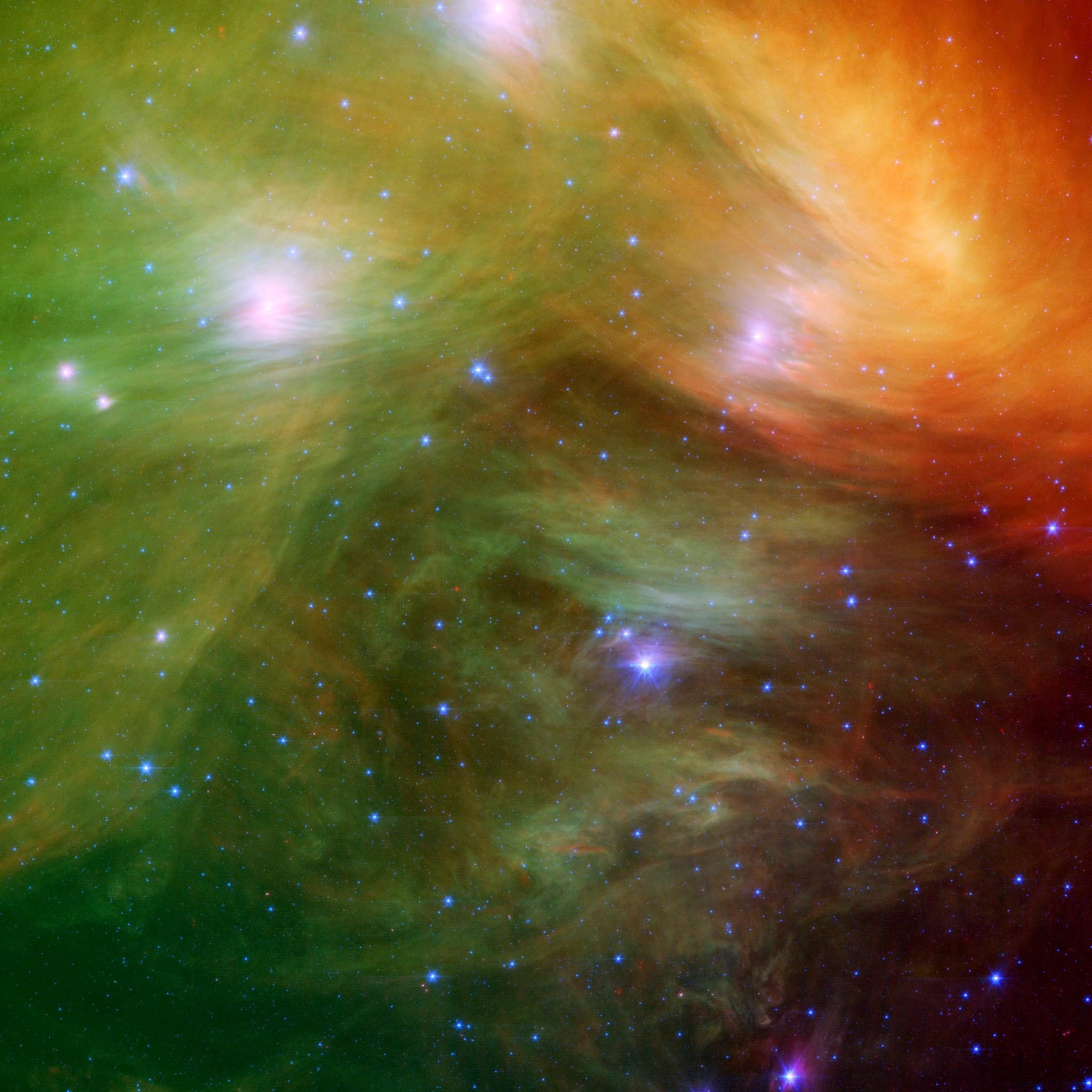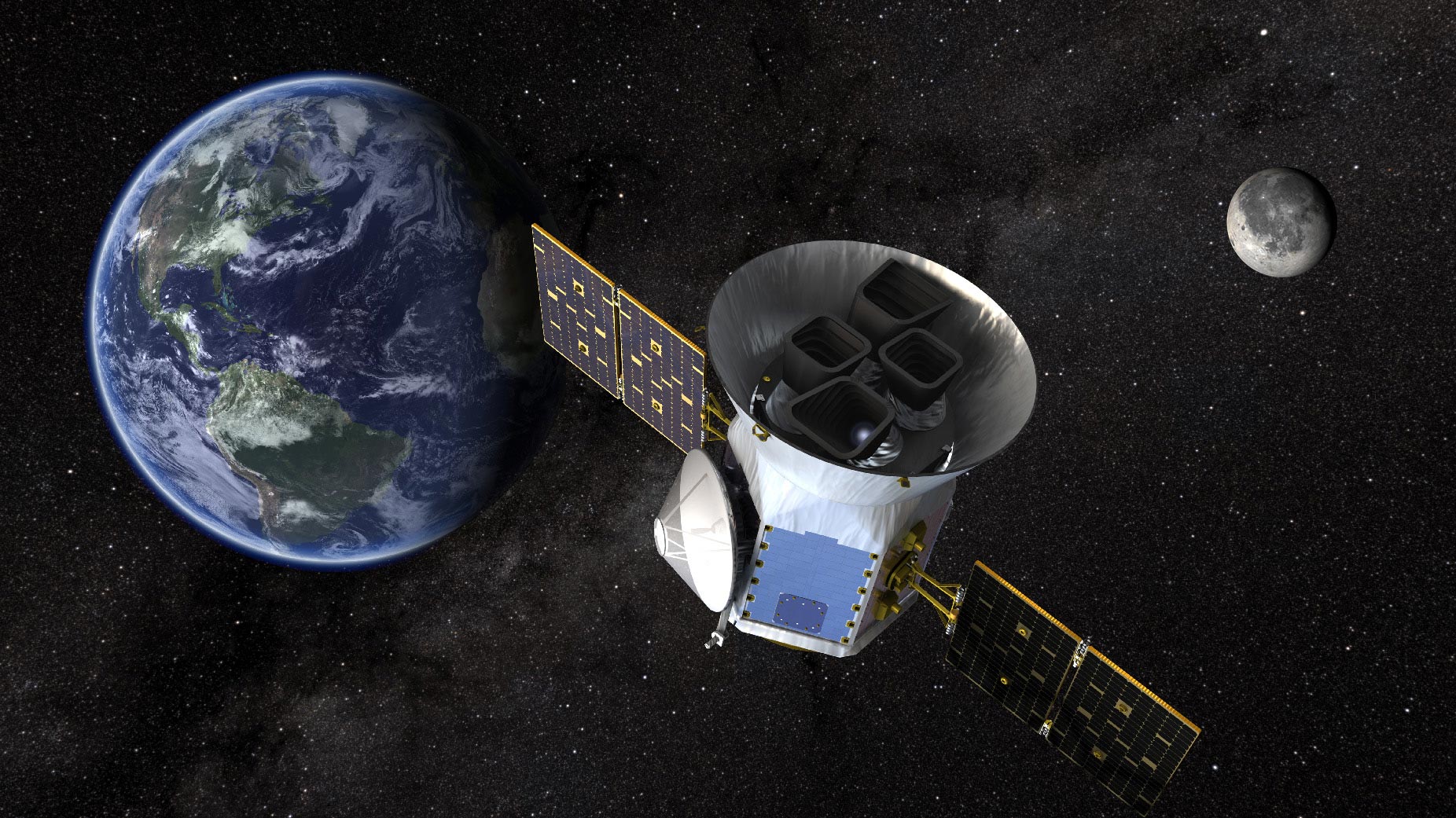✨ The Pleiades: the mythical constellation is 20 times larger than previously thought
Follow us on Google News (click on ☆)
Astronomers from the University of North Carolina at Chapel Hill have just revealed that what we perceive as the Pleiades is actually only the visible core of a much more extensive stellar family. By combining data from NASA's TESS satellite and the European Space Agency's Gaia space telescope, they discovered thousands of previously invisible stars scattered across the sky. This expanded structure, named the Great Pleiades Complex, would represent an area twenty times larger than what scientists previously estimated.

The Pleiades, also known as the Seven Sisters cluster, appear to float on a bed of feathers in this infrared image from NASA's Spitzer Space Telescope. Dust clouds sweep across the stars, enveloping them in a cottony veil.
Credit: NASA/JPL-Caltech
The method used by the researchers relies on a fundamental property of stars: their rotation speed. Like many things in nature, stars slow down with age. Young stars rotate rapidly on their axes, while older ones adopt a slower motion. By precisely measuring this rotation using TESS instruments, and cross-referencing this information with position and motion data provided by Gaia, the team was able to identify many distant members of the Pleiades that share the same age and composition characteristics.
Andrew Boyle, lead author of the study, explains that this discovery radically transforms our perception of the Pleiades. They are no longer just seven bright stars, but thousands of stellar sisters scattered across the celestial vault. This revelation has importance that goes beyond the mere astronomical framework, as the Pleiades hold a special place in many cultures, from the Old Testament to the Maori traditions of New Zealand, including the logo of the Subaru automobile brand.
This new approach opens perspectives for mapping our galactic region. The technique developed by the researchers could help identify other scattered stellar families that escape traditional observation methods. Andrew Mann, co-author of the study, emphasizes that many stars near our Sun could belong to vast extended stellar families whose existence we still ignore.
The implications of this discovery extend to understanding our own origins. By refining this method of identifying stellar families, astronomers might one day determine whether our Sun itself was born within a group similar to the Pleiades. This perspective offers a new way to consider the formation of planetary systems and the evolution of stars throughout the Galaxy.

Illustration of NASA's TESS (Transiting Exoplanet Survey Satellite) satellite in operation.
Credit: NASA's Goddard Space Flight Center
Star rotation: the cosmic clock that reveals age
The rotation speed of a star functions as a natural clock that allows astronomers to determine its age with remarkable precision. This phenomenon resembles that of a spinning top that gradually slows down due to friction. In the case of stars, this slowing is explained by the interaction between their magnetic field and the stellar wind they constantly emit into space.
Young stars, full of energy, rotate rapidly on their axes, completing a full rotation in just a few hours. This initial velocity comes from the conservation of angular momentum during the collapse of the gas cloud that gave them birth. Over billions of years, this spinning motion slows inexorably, transforming adolescent stars into calmer, more stable celestial bodies.
This physical property offers scientists a valuable tool for dating stars without resorting to spectral analysis methods. By measuring brightness variations caused by starspots passing in front of the observer, instruments like TESS can accurately calculate a star's rotation period. This approach proves particularly useful for studying young stars, whose rapid rotation allows for easier and more reliable measurements.
Applying this technique to the Pleiades enabled the identification of stars sharing the same age as the cluster's core, thus revealing their belonging to the same stellar family. This method paves the way for a new understanding of the structure and evolution of star groups in our Galaxy, offering a simple and effective way to trace the history of stellar populations.

Artist's view of the Gaia satellite in front of the Milky Way.
Credit: ESA/ATG medialab; background: ESO/S. Brunier
Stellar families: hidden connections in the Galaxy
Stars are generally not born in isolation, but within vast stellar nurseries where thousands of celestial bodies come into existence simultaneously. These family groups, held together by gravitational force, represent the fundamental units of stellar formation in our Galaxy. Over time, these bonds gradually loosen under the influence of galactic forces, transforming compact clusters into scattered families.
The dispersal process begins when newly formed stars interact gravitationally with each other, exchanging energy and modifying their trajectories. Some members acquire enough velocity to escape the group's attraction, while others move closer to the center. These interactions, combined with tidal effects caused by passing near other galactic structures, eventually slowly break up these stellar families.
The discovery of the Great Pleiades Complex perfectly illustrates this phenomenon of stellar evolution. What we observe today as a small compact cluster is only the densest part of a much vaster structure, whose members have gradually moved away from each other over the past hundred million years. This dispersal makes identifying family connections difficult using traditional observation methods.
The new approach developed by the researchers, combining rotation data and position measurements, allows for the reconstruction of these scattered stellar families. This method could revolutionize our understanding of the Milky Way's structure by revealing the existence of vast stellar networks previously invisible, transforming our vision of a Galaxy populated by solitary stars into that of a universe organized into extended families.